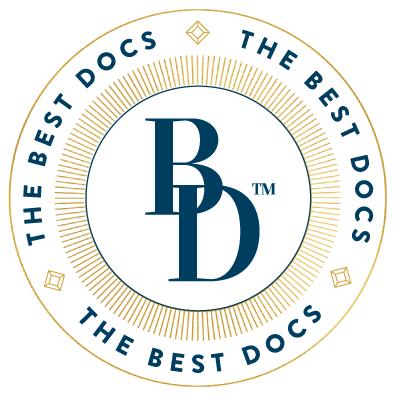Back Pain Got You Down? Look Up a Neurosurgeon.
Anyone who has ever experienced back pain understands the negative impact it can have on their quality of life. Even getting out of bed can be difficult, so the idea of enjoying more physical activities is often out of the question.
But where do you go for help? How about a neurosurgeon?
You’re probably asking, “Why would I go to a brain doctor for my back problems?”
The bigger question is “Why wouldn’t you?”
To better understand the positive impact neurosurgeons have on solving back pain, we spoke with an expert, Dr. Rob Dickerman—a board-certified neurosurgeon with a thriving back pain practice in Plano, Texas.
“When most people hear the term ‘neurosurgeon’, they immediately think of someone who only treats problems associated with the brain,” Dr. Dickerman explains. “The truth, however, is that neurosurgeons are uniquely qualified to treat issues related to the spine.”
He explains that to earn the title of neurosurgeon, an individual must receive extensive training in spinal issues—likely more training than any other type of specialty that they may focus on. According to Dr. Dickerman, roughly 80% of treatments offered by a neurosurgeon are specific to spinal problems.
“When most people hear the term ‘neurosurgeon’, they immediately think of someone who only treats problems associated with the brain,” Dr. Dickerman explains. “The truth, however, is that neurosurgeons are uniquely qualified to treat issues related to the spine.”
The reason? Because the spine is so much more than just bones. “Most people know about the 33 vertebrae, but the spine is actually an extremely complex nervous system,” Dr. Dickerman explains.
Complex, indeed. Thirty-one pairs of spinal nerves extend from the spinal cord and carry messages back and forth between your body and the spinal cord to control sensation and movement. Each spinal nerve has two roots—the ventral (front) root carries motor impulses from the brain and the dorsal (back) root carries sensory impulses to the brain.
“Most people think back pain stems from the bones,” Dr. Dickerman says. “This just isn’t true. The nerve roots that line the spine or the narrowing of the spinal canal cause the majority of the issues.”
It’s becoming clearer why a neurologist is often the perfect choice to treat back problems.
Regarding treatments, we asked Dr. Dickerman—who is fellowship trained in spine and specializes in conservative treatments as well as minimally invasive surgeries—to discuss some of the key non-surgical options. “One of the most important factors to consider when you are dealing with any type of spinal difficulty is that your case is going to be unique,” he explains. “To that end, your doctor should create a comprehensive treatment program that will work specifically for your situation.”
This treatment program may vary, but typically it includes a variety of the following options:
Physical Therapy—The goal of physical therapy is to relieve pain while strengthening the back. This can be accomplished through stretching, heat therapy, cold therapy, and electrical stimulation.
Injections—Injections help reduce inflammation, pain, and other problems. There are different types of injections, depending on the type of issues the patient is experiencing. These include facet injections, epidural injections, trigger point injections, and joint injections.
Chiropractic—A qualified chiropractor adjusts your spine to help reduce the problems associated with pinched or irritated nerves.
Pain Management—When you are dealing with spine pain, one thing many patients want is immediate and lasting relief. Sometimes, this is done through a pain management treatment option that could include medication.
Surgery is also an option, but Dr. Dickerman insists that patients should pursue surgery only if they are unable to experience relief and healing through non-surgical methods. And even then, he prefers a minimally invasive spinal procedure. Since it is minimally invasive, it can help to treat the problem with a minimal risk of soft tissue or muscle damage.
In all cases, individuals should only work with a board-certified doctor who has proven education, experience, and skills to treat back pain properly. Just ask professional golfer Lanny Wadkins. He went to Dr. Dickerman after suffering severe leg pain and instability in his lower back. “Dr. Dickerman decompressed the nerves and performed a fusion of my lower two discs,” Wadkins says. “I am now pain free and playing golf again. It’s the best I have felt in years!”



